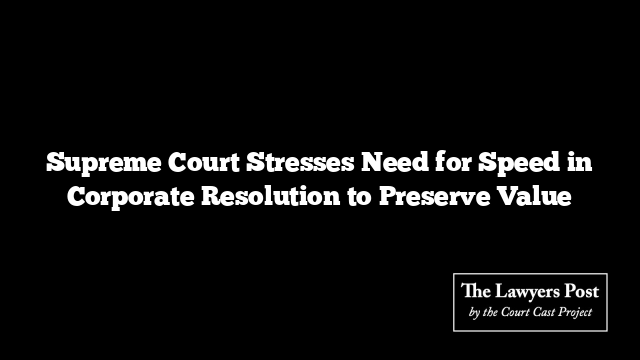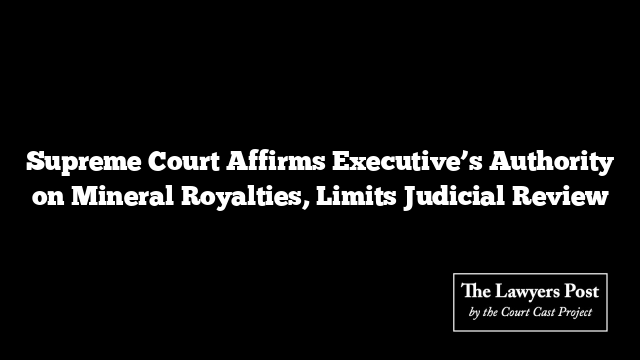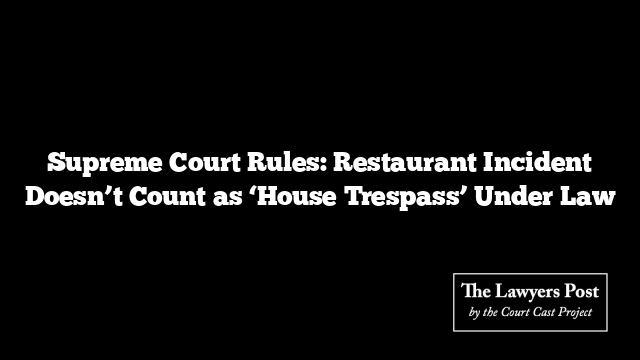The Supreme Court has underscored the importance of swift implementation in corporate resolution plans, asserting that timely action is fundamental to preserving asset value under the Insolvency and Bankruptcy Code (IBC). A bench led by Chief Justice DY Chandrachud emphasized that delays can erode the value of assets, jeopardizing one of the core objectives of the IBC: averting unnecessary dissipation of resources.
Swift Action: Key to Asset Preservation
The IBC was established to streamline and hasten the insolvency resolution process, allowing troubled corporations to either rehabilitate through a sale as a going concern or, at minimum, retain asset value before liquidation. The court highlighted the recommendations of the Bankruptcy Law Committee, which conceived the Code, stressing that delayed resolution undermines the goal of asset preservation, making an efficient timeline critical for viable restructuring or liquidation.
Court Criticizes Delays in Plan Implementation
The court drew attention to the persistent issue of delays in implementing approved resolution plans, citing previous cases like Innoventive Industries v. ICICI Bank, which highlighted the need for a unified and expedited approach to insolvency. The bench noted that when a resolution plan is left unexecuted, the value of the debtor’s assets declines, ultimately defeating the Code’s intent.
The court warned against frequent extensions of deadlines, a practice enabled under NCLT and NCLAT rules but cautioned that such extensions should not be granted lightly. Excessive delays, they noted, can undermine the financial feasibility of a resolution and increase the corporate debtor’s liabilities, potentially destabilizing recovery efforts.
On Liquidation Powers and Circumspection in Extensions
The bench further examined the court’s ability to order liquidation under its extraordinary powers, distinguishing this case from similar cases to justify its intervention. When delay threatens the foundational aims of the Code, the court asserted, timely liquidation may become essential to maintain asset value and protect creditor interests.
The ruling also addressed requests for extensions or modifications to the terms of the resolution plan, a recurring issue that can detract from the Code’s strict timelines. The court advised adjudicating authorities to be cautious when considering these requests, urging them to avoid actions that compromise the approved terms of the plan or erode the predictability and integrity of the insolvency process.
Responsibilities of Resolution Applicants and Lenders
The court also sent a strong message to Successful Resolution Applicants (SRAs) and creditors, reminding them of their duty to execute resolution plans in good faith. SRAs, the court asserted, cannot evade their responsibilities or cite financial obstacles post-approval as an excuse for non-compliance. Lenders, too, were advised to work cooperatively, aligning their financial goals with the broader objective of corporate rehabilitation rather than using the resolution process to seek individual advantage.
The court recommended that a monitoring committee, including representatives from the Committee of Creditors (CoC), be established to oversee the plan’s execution, ensuring progress and adherence to statutory requirements. By empowering such a committee, stakeholders can better track implementation and promptly address any hindrances, thus reducing the need for judicial intervention.
Enforcement of Strict Compliance
In a final note, the Supreme Court reminded all parties of the legal consequences of contravening an approved resolution plan. Under Section 74 of the IBC, penalties for non-compliance include substantial fines and potential imprisonment, underscoring the Code’s firm stance on upholding agreed terms. The court called on adjudicating bodies to enforce these mandates rigorously, maintaining that any attempt to bypass the law’s stipulations should be met with appropriate repercussions.
This judgment serves as a powerful reminder of the IBC’s commitment to preventing the erosion of corporate asset value and ensuring that all stakeholders actively contribute to the effective realization of the insolvency resolution process.





